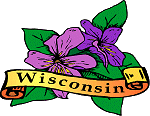


JOHN MUIR COUNTRY Location: Hwy 22, 8 miles south of Montello Erected: 1969 It was over this road that John Muir traveled to such early settlements as Kingston and Pardeeville. Muir was eleven when he came here from scotland with his father, brother and sister in 1849. His mother arrived with her other children after a home had been carved out of the wilderness. They settled west of here at "Fountain Lake," at what is now John Muir Memorial Park. Here, surrounded by the beauties of nature, Muir began his love of wild animals, flowers, trees and waters. Later, the family moved five miles east to the hickory Hill Farm. Muir's early education began at home. His mechanical skill was demonstrated by many ingenious inventions. He entered the University of Wisconsin but left without completing his studies to travel throughout the West on foot. While hiking through the Sierra Nevadas, he found his real inspiration and life work. His many and persistent articles and letters persuaded Congress to pass the National Park Act in 1890. This was the beginning of a formal national park movement. "Everybody needs beauty as well as bread; places ot play in and places to pray in, where nature may heal and cheer, and give strength to body and soul alike"...John Muir
KOREAN WAR Location: Rest Area No. 82, Hwy 51/I-39, 4 miles North of Westfield Erected: 1990 On June 25, 1950, Communist North Korea invaded the Republic of Korea. Backed by Soviet Russia, the North Koreans quickly overran most of the peninsula. South Korea appealed to the United States for assistance, and President Harry Truman immediately ordered General Douglas MacArthur to commit U.S. troops. The united Nations condemned North Korea's North Korean aggression and solicited military aid from member nations. Following a series of defeats, General MacArthur launched a daring amphibious landing at Inchon in September 1950 and advanced northward to the Yalu River. Then Communist China massively intervened, and the allied forces retreated southward. The fighting eventually stabilized along the 38th Parallel, the original boundary between North and South Korea. After a long, bloody stalemate and protracted negotiations, an armistice was signed on July 27, 1953. The Korean War -- or "police action" as it was called -- cost 33,629 Americans killed in action and another 103,000 wounded. More than 132,000 Wisconsinites were involved in this "forgotten war," of whom 801 were killed in action and 4,286 were wounded. Another 111 were captured, and 84 remain listed as missing in action.
RUSSELL FLATS SCHOOL Photo of the Russell Flats Marker Location: corner of Ember Ave and 4th Ave, Westfield Erected: 1999 Contributed by: Roberta Johnson Built in 1867, this one room rural school has served as the center of community life in Russell Flats for over 130 years. Constructed by Scots-Irish settlers who arrived here in the early 1850's, the school has functioned as the local Presbyterian church and the Westfield Town Hall. The community is named for the first settlement family, the Russell's. They found the area's fertile soil and nearby springs perfect for farming. Today, several descendants of the Scotch-Irish settlers still own or occupy their original family farms. --contributed by Roberta Johnson, member of the Russell Flats historical marker committee
Back to the Marquette Pages Menu